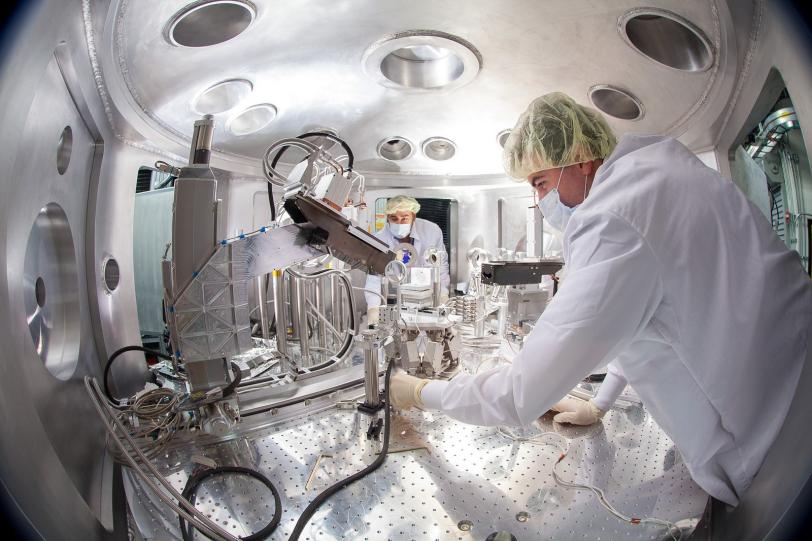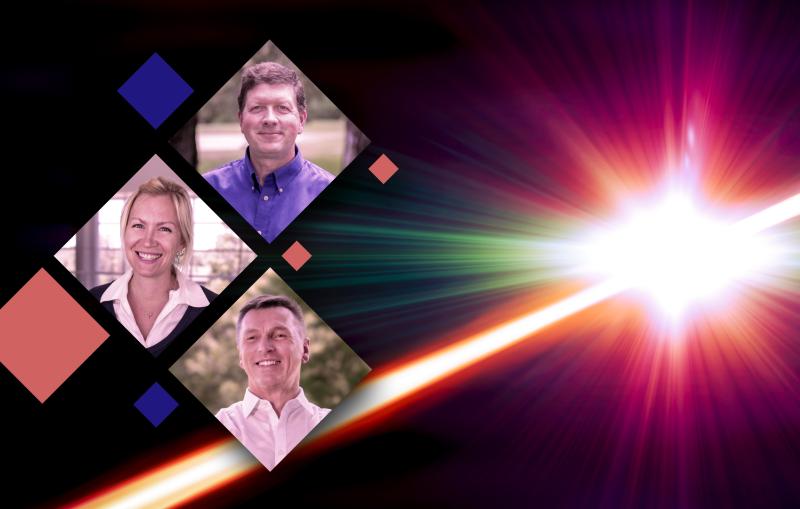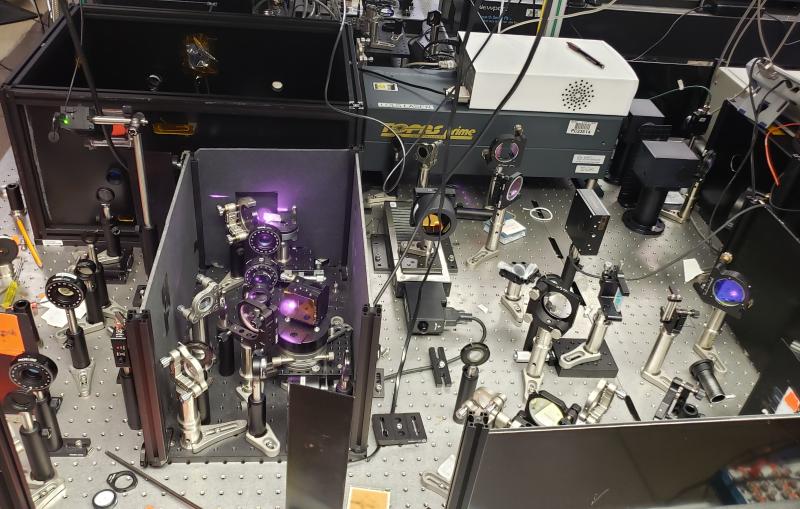SLAC joins new LaserNetUS network to boost high-intensity laser research
The initiative will give scientists more access to powerful lasers at universities and labs.
The Department of Energy’s SLAC National Accelerator Laboratory has joined a new research network called LaserNetUS that aims to boost access to high-intensity laser facilities at labs and universities across the country, including the Matter in Extreme Conditions (MEC) laser facility at SLAC’s Linac Coherent Light Source (LCLS).
The initiative, which is funded by the Fusion Energy Sciences (FES) program in DOE’s Office of Science, will receive $6.8 million over two years and includes nine institutions nationwide operating high-intensity, ultrafast lasers. Along with SLAC, partners are the University of Texas at Austin, Ohio State University, Colorado State University, University of Michigan, University of Nebraska-Lincoln, University of Rochester, Lawrence Berkeley National Laboratory and Lawrence Livermore National Laboratory.
High power, broad reach
High-intensity lasers have a broad range of applications in basic research, manufacturing and medicine. For example, they can be used to recreate some of the most extreme conditions in the universe, such as those found in supernova explosions and near black holes. They can generate high-energy particles for high energy physics research or intense X-ray pulses to probe matter as it evolves on ultrafast time scales. They are also promising in many potential technological areas such as for generating intense neutron bursts which could evaluate aging aircraft components, precisely cut materials or potentially deliver tightly focused radiation therapy to cancer tumors.
LaserNetUS includes the most powerful lasers in the United States, some of which have powers approaching or exceeding a petawatt. Petawatt lasers generate light with at least a million billion watts of power, or nearly 100 times the output of all the world's power plants – but only in the briefest of bursts. Using the technology pioneered by two of the winners of this year's Nobel Prize in Physics, chirped pulse amplification of optical lasers, these lasers fire off ultrafast bursts of light shorter than a trillionth of a second.
Leveraging SLAC’s MEC
Built in 2012, SLAC’s MEC instrument has enabled unique studies of extremely hot, dense matter found at the centers of stars and giant planets. The optical laser, with a peak power of 25 terawatts, combined with the world-leading X-ray laser beam of LCLS has produced numerous scientific results published in major journals. LaserNetUS will facilitate access to laser-only time at MEC; access to LCLS, a DOE Office of Science user facility, is decided through a separate peer review process.
“I expect this network to energize the high-power laser community in the U.S. by leveraging some of the excellent existing facilities and motivating future investments,” Gilliss Dyer, department head of MEC said. “There are many talented scientists in this field who need better access to laser facilities to try their ideas. For SLAC, this is a great opportunity to broaden the MEC user base and drive even more great science.”
Laser-only time supported through LaserNetUS could give researchers an opportunity to develop experimental platforms and gain experience valuable in building successful proposals for LCLS experiments at MEC, Dyer said.
Maintaining leadership
The U.S. was the dominant innovator and user of high-intensity laser technology in the 1990s, but now Europe and Asia have taken the lead, according to a recent report from the National Academies of Sciences, Engineering and Medicine titled "Opportunities in Intense Ultrafast Lasers: Reaching for the Brightest Light." Currently, 80 to 90 percent of the world's high-intensity ultrafast laser systems are overseas, and all of the highest-power research lasers currently in construction or already built are also overseas. The report's authors recommended establishing a national network of laser facilities to emulate successful efforts in Europe. LaserNetUS was established for exactly that purpose.
LaserNetUS will hold a nationwide call for proposals for access to the network's facilities. The proposals will be peer reviewed by an independent panel. This call will allow any researcher in the U.S. to request time on one of the high-intensity lasers at the LaserNetUS host institutions.
For questions or comments, contact the SLAC Office of Communications at communications@slac.stanford.edu.
SLAC is a multi-program laboratory exploring frontier questions in photon science, astrophysics, particle physics and accelerator research. Located in Menlo Park, Calif., SLAC is operated by Stanford University for the U.S. Department of Energy's Office of Science.
SLAC National Accelerator Laboratory is supported by the Office of Science of the U.S. Department of Energy. The Office of Science is the single largest supporter of basic research in the physical sciences in the United States, and is working to address some of the most pressing challenges of our time.






